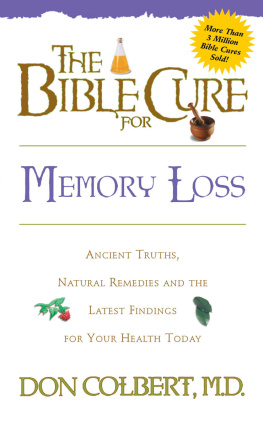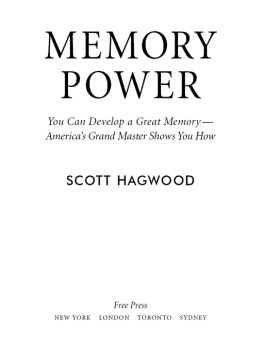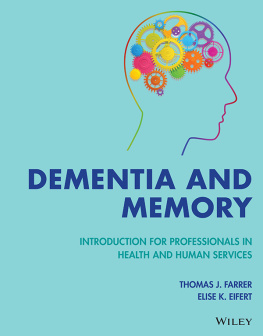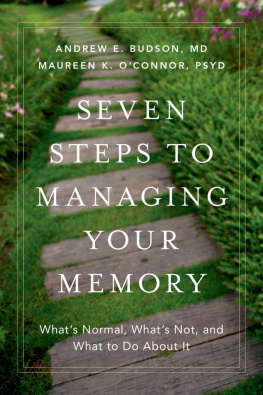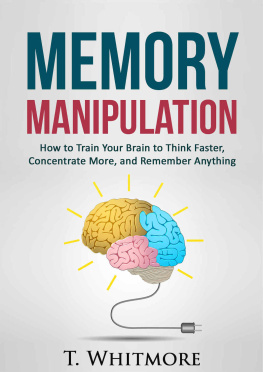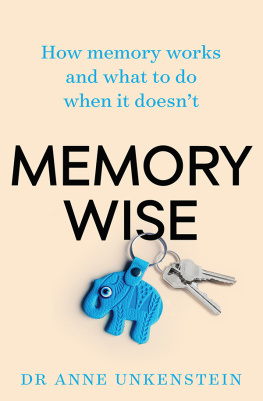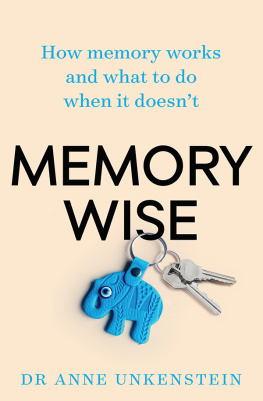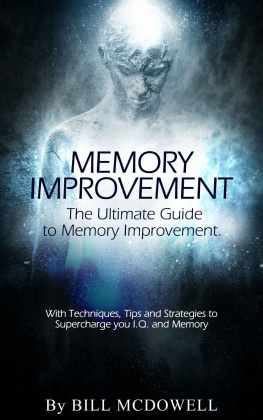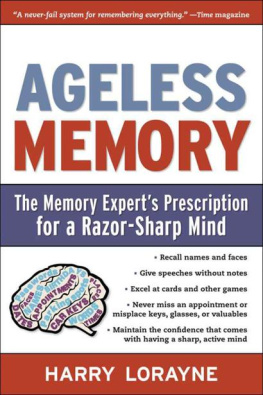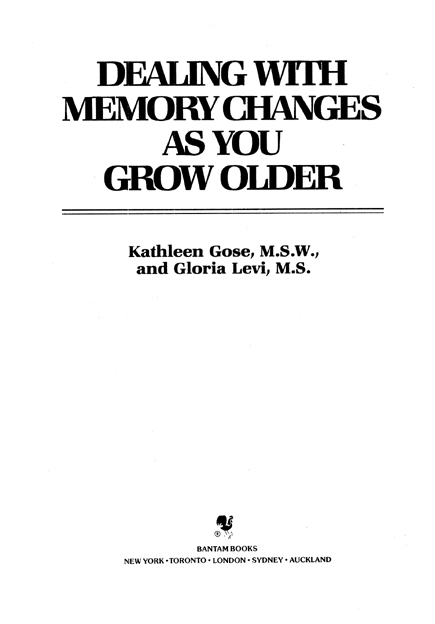DEALING WITH MEMORY CHANGES AS YOU GROW OLDER
A Bantam Book / published by arrangement with the authors
All rights reserved.
Copyright 1985 by Kathleen Gose and Gloria Levi.
No part of this book may be reproduced or transmitted in any form or by any means, electronic or mechanical, including photocopying, recording, or by any information storage and retrieval system, without permission in writing from the publisher.
For information address: Bantam Books.
Library of Congress Cataloging-in-Publication Data
Gose, Kathleen.
Dealing with memory changes as you grow older.
Reprint. Originally published: Toronto : McClelland-Bantam, cl985. (Seal books)
Bibliography: p.
1. Memory in old age. I. Levi, Gloria. II. Title.
BF724.85.M45G68 1988 155.67 88-47682
eISBN: 978-0-307-81337-4
Bantam Books are published by Bantam Books, a division of Bantam Doubleday Dell Publishing Group, Inc. Its trademark, consisting of the words Bantam Books and the portrayal of a rooster, is Registered in U.S. Patent and Trademark Office and in other countries. Marca Registrada. Bantam Books, 666 Fifth Avenue, New York, New York 10103.
v3.1
CONTENT
INTRODUCTION
HOW THIS HANDBOOK CAME ABOUT
Both authors of this book have worked with older adults for many years; Kathy with people in the community, Gloria with people both in the community and in care facilities. We have been struck many times by the concerns and anxieties voiced by seniors about their changing abilities to remember.
This led us to explore what has been written about memory and aging, what has been written specifically for older adults on the subject, and what is being done about memory training courses for older people. We discovered that there is a growing amount of research on memory and aging, quite a bit of it still in the wait and see stage. But there is very little written directly for older adults and there are few classes dealing with their memory changes.
In 1978 we conducted a ten-hour program in memory training at the Summer Session for Seniors at the University of British Columbia. The response was quite startling. Many more people than we could accommodate wanted to enroll in the program. Some of the people on the waiting list were very insistent about their need for such a course.
Since that time we have offered many courses separately and jointly, revising and reworking material to meet the needs of the people we have taught. As time passed, we began to consider writing a book specifically for older people on normal memory changes. We reviewed the literature, spoke to other professionals, and discussed our ideas with older people. We also did a considerable amount of soul searching about the relevance to older adults of much that is offered as memory training. From all this emerged Dealing With Memory Changes as You Grow Older.
WHO THIS BOOK IS FOR
This book is written for adults who are in reasonable health and living independently. It is not intended for people who are suffering from serious brain disorders, or are severely handicapped, clinically depressed, or on heavy dosage of medications which affect the central nervous system. The book is for people who are experiencing the normal memory changes of aging and are interested in learning more about them and how to handle them effectively.
WHAT THE HANDBOOK IS ABOUT
We have come to realize that a book written specifically for older adults must contain much more than the techniques to a better memory which are offered in memory training books aimed at the general public. While some information in these books is useful, much of it is not relevant to older people.
Our book has taken a broad, inclusive approach to the subject of normal memory changes because there are many physical and psychological influences which play a part in those changes. The purpose of the book is threefold: 1) to give the reader an understanding of the basic principles of how the memory works; 2) to offer the reader a range of memory aids which can be useful in certain circumstances; 3) to explore the issues of remembering as they relate to aging and to personal lifestyle.
This is a handbook, defined by the dictionary as a small guidebook, reference book, or book of instructions. We have organized it for easy reference and hope that it will serve as a guide to the reader. We have also included a number of quizzes, exercises and examples relevant to our readers to help explain various points and ideas. We invite the reader to get involved with the material rather than simply to read through the book.
We have been assisted by a group of advisors, older men and women who have helped us in early revisions of the manuscript. We have also received help from members of classes in two senior centers. They supplied many ideas for the chapter on practical strategies for remembering, and told us a lot about how they feel and what they do when they have problems with forgetting. One of the pleasures of writing this book has been working with the people who contributed directly to some of its pages from their own experiences with remembering and forgetting.
A word about the use of he. Most readers of this book were no doubt trained, as we were, to use the pronoun he to represent both men and women in general (as in To each his own). We agree that it is important to recognize women as women, and we also recognize that there are many more older women than men. The more precise and egalitarian use of pronouns would be she/he or he/she. But in our opinion this is clumsy to write and quickly becomes tedious to read. Therefore, for ease of style we have usually used he and sometimes she to stand for men and women in general. We have also used various ways to include both sexes at once in our sentences.
MANY THANKS
This book could not have been published without the financial assistance of the Health Promotion Director-ate of Health and Welfare Canada. We are very grateful for this support. The ideas in the book are the authors, or come from our research, and do not necessarily reflect the official policy of Health and Welfare Canada.
We also wish to thank the Council of Senior Citizens Organizations (COSCO) which as our official sponsor administered the contribution of the Health Promotion Directorate and gave us their encouragement and support. Some of their members served on our advisory committee and followed our progress with interest.
We appreciate the important contribution made to this book by our senior advisors who patiently read through the manuscript, pointing out problems and making suggestions for improvements. Members of this group are Charles Bayley, Clifford Fenner, Evelyn Olson, Mary Rupp, Marjorie Smith and Arthur Sweet. We are also grateful to our professional colleagues for their advice and support.
Our thanks to Margo Palmer of the Health Promotion Directorate, whose encouragement and keen editorial eye have helped us along the way. We also thank Elliott Gose for several contributions to the book, both general and personal, for clear-headed readings of the manuscript, and helpful suggestions for revision.


